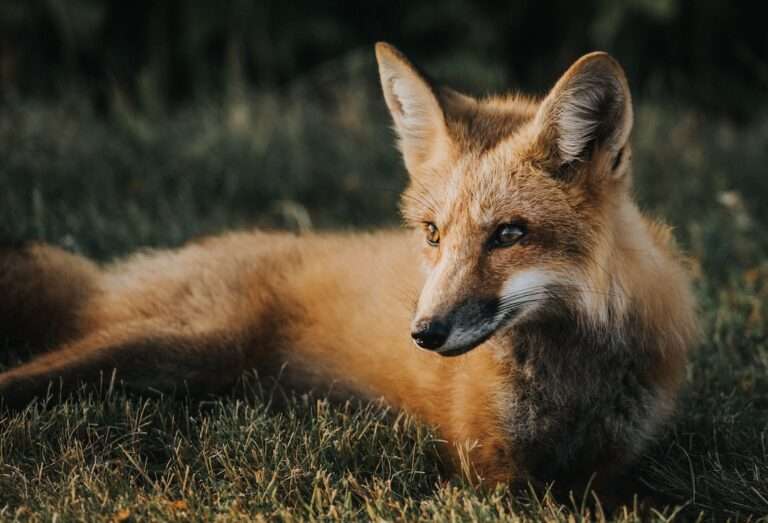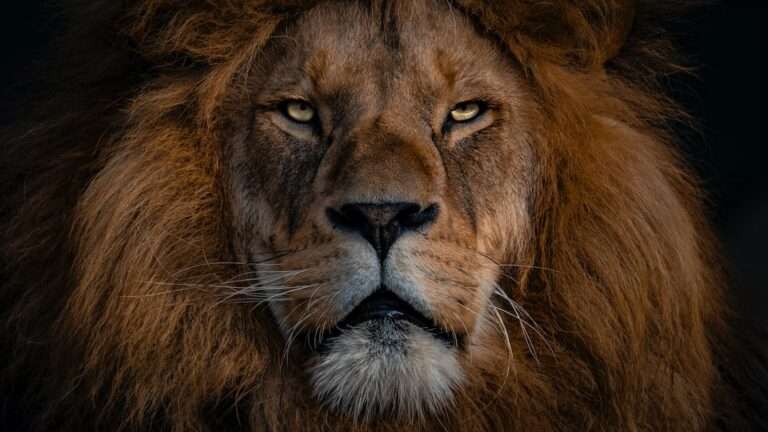The Majestic Red-tailed Hawk: Understanding the Symbolism Behind this Powerful Bird

The red-tailed hawk holds a special place in Native American culture, with a rich history and deep significance in various tribes. This majestic bird has long been revered for its strength, agility, and keen hunting skills. In many Native American traditions, the red-tailed hawk is seen as a symbol of power, vision, and spiritual guidance.
Throughout history, the red-tailed hawk has been an important figure in Native American folklore and mythology. It is often associated with the sun, representing the connection between the physical and spiritual realms. The red-tailed hawk is believed to possess the ability to see beyond what is visible to the human eye, acting as a messenger between the heavens and the earth.
Different tribes have their own unique interpretations of the red-tailed hawk’s significance. For example, in the Lakota Sioux tradition, the red-tailed hawk is considered a sacred bird that brings messages from the spirit world. In the Hopi tradition, it is believed that the red-tailed hawk carries prayers to the Creator.
Key Takeaways
- The Red-tailed Hawk holds great significance in Native American culture.
- The bird’s physical characteristics include sharp talons, keen eyesight, and a distinctive red tail.
- Red-tailed Hawks can be found throughout North America in a variety of habitats.
- The bird’s diet consists of small mammals, birds, and reptiles.
- Red-tailed Hawks mate for life and exhibit unique nesting behaviors.
Physical Characteristics of the Red-tailed Hawk: Anatomy and Adaptations
The red-tailed hawk is a large bird of prey with a wingspan of up to four feet and a body length of around two feet. It has broad wings and a short, wide tail that is reddish-brown in color, giving it its name. The rest of its body is predominantly brown with a pale underside.
One of the key adaptations that make the red-tailed hawk such a successful predator is its keen eyesight. It has excellent vision, allowing it to spot prey from great distances while soaring high in the sky. Its eyes are specially adapted to detect movement and see in low light conditions.
Another adaptation of the red-tailed hawk is its sharp talons and hooked beak. These powerful tools enable it to capture and kill its prey with precision. The red-tailed hawk primarily hunts small mammals, such as rodents and rabbits, but it is also known to feed on birds, reptiles, and even carrion.
Habitat and Range of the Red-tailed Hawk: Where to Spot this Majestic Bird
The red-tailed hawk is a highly adaptable species that can be found in a wide range of habitats across North America. It is most commonly found in open areas such as grasslands, deserts, and agricultural fields. However, it can also be seen in forests, mountains, and urban areas.
The geographic range of the red-tailed hawk extends from Alaska and Canada down to Mexico and Central America. It is a year-round resident in many parts of its range, but some populations migrate south during the winter months in search of food.
Hunting and Feeding Habits of the Red-tailed Hawk: A Closer Look at its Diet
| Hunting and Feeding Habits of the Red-tailed Hawk | |
|---|---|
| Diet | Small mammals such as rodents, rabbits, and squirrels; birds; reptiles; and occasionally insects and fish. |
| Hunting Techniques | Red-tailed hawks hunt from perches or while soaring in the air. They use their sharp talons to catch and kill prey. |
| Feeding Behavior | Red-tailed hawks are opportunistic feeders and will eat whatever prey is available. They typically eat once a day and may store excess food for later consumption. |
| Prey Size | Red-tailed hawks can take prey up to three times their own weight, but typically hunt prey that is smaller than themselves. |
| Range | Red-tailed hawks are found throughout North America, from Alaska to Panama. |
The red-tailed hawk is a skilled hunter that employs various techniques to capture its prey. It primarily hunts by soaring high in the sky, using its keen eyesight to spot potential targets on the ground. Once it has located its prey, it will dive down at high speeds to make a swift and precise attack.
The red-tailed hawk’s diet consists mainly of small mammals, such as mice, voles, rabbits, and squirrels. It will also feed on birds, reptiles, amphibians, and even insects when other food sources are scarce. In some cases, the red-tailed hawk will scavenge for carrion, taking advantage of already dead animals.
Breeding and Reproduction of the Red-tailed Hawk: Nesting Behaviors and Life Cycle
The breeding season for red-tailed hawks typically begins in early spring. During this time, pairs engage in elaborate courtship displays that involve aerial acrobatics and vocalizations. Once a pair has formed, they will build a large nest made of sticks and lined with softer materials such as leaves and grass.
The red-tailed hawk’s nest is usually located high up in a tree or on a cliff ledge, providing a safe and secure place for the eggs and young chicks. The female will lay one to four eggs, which she will incubate for about 30 days. Both parents take turns incubating the eggs and hunting for food.
After the eggs hatch, the chicks are initially covered in white down feathers. They grow rapidly and are able to leave the nest after about six weeks. However, they will continue to rely on their parents for food and protection for several more weeks until they are fully independent.
The Red-tailed Hawk in Literature and Art: Depictions and Symbolism in Human Culture

The red-tailed hawk has been a source of inspiration for artists and writers throughout history. Its majestic appearance and powerful presence have made it a popular subject in literature, paintings, sculptures, and other forms of artistic expression.
In literature, the red-tailed hawk is often used as a symbol of freedom, strength, and resilience. It is frequently depicted as a noble creature that embodies the spirit of the wild. One notable example is the novel “Red-Tails in Love” by Marie Winn, which tells the story of a pair of red-tailed hawks nesting in New York City.
In art, the red-tailed hawk is often portrayed in flight, capturing its grace and agility. It is also depicted alongside other symbols of nature and spirituality, emphasizing its connection to the natural world. Native American artists have long incorporated the red-tailed hawk into their traditional artwork, using it as a symbol of power and protection.
Spiritual Significance of the Red-tailed Hawk: What it Represents in Different Belief Systems
The red-tailed hawk holds spiritual significance in various belief systems around the world. In Native American traditions, it is often seen as a messenger from the spirit world, carrying prayers and guidance from the ancestors. It is believed to possess the ability to see beyond the physical realm and provide spiritual insight.
In some Native American tribes, the red-tailed hawk is associated with healing and transformation. It is believed to have the power to bring about positive change and help individuals overcome obstacles in their lives. The red-tailed hawk is also seen as a symbol of protection, guiding and guarding those who seek its assistance.
In other cultures, the red-tailed hawk is associated with different spiritual qualities. In Celtic mythology, for example, it is seen as a symbol of prophecy and divination. In Norse mythology, it is associated with the god Odin, who was said to have two red-tailed hawks that would fly around the world and bring him information.
Threats to the Red-tailed Hawk: Conservation Efforts and Challenges Facing this Species
While the red-tailed hawk is not currently considered a threatened species, it does face certain challenges that could impact its population in the future. One of the main threats to the red-tailed hawk is habitat loss due to urbanization and agricultural development. As natural habitats are destroyed or fragmented, the bird’s ability to find suitable nesting sites and prey can be compromised.
Another threat to the red-tailed hawk is pesticide use. The bird’s diet consists mainly of small mammals, which can be exposed to pesticides through contaminated food sources. This can have negative effects on the health of both adult hawks and their offspring.
Conservation efforts are underway to protect the red-tailed hawk and its habitat. These include initiatives to preserve open spaces, create protected areas, and promote sustainable land management practices. Education and outreach programs are also important in raising awareness about the importance of conserving this iconic bird.
Red-tailed Hawk Migration Patterns: Understanding its Seasonal Movements
While some red-tailed hawks are year-round residents in certain areas, others undertake seasonal migrations. These migrations are influenced by factors such as food availability and weather conditions.
In general, red-tailed hawks that breed in northern regions will migrate south during the winter months in search of food. They will often travel long distances, sometimes crossing entire continents. The timing and routes of these migrations can vary depending on the specific population and individual bird.
During migration, red-tailed hawks can be seen soaring high in the sky, taking advantage of thermal updrafts to conserve energy. They will often form large groups called kettles, which can consist of hundreds or even thousands of birds. These kettles provide protection and allow the hawks to navigate more efficiently.
Observing and Photographing the Red-tailed Hawk: Tips for Birdwatchers and Wildlife Enthusiasts
For birdwatchers and wildlife enthusiasts, observing and photographing the red-tailed hawk can be a rewarding experience. Here are some tips to increase your chances of spotting this majestic bird in the wild:
1. Learn to recognize its call: The red-tailed hawk has a distinctive call that can help you locate it. It is often described as a high-pitched scream or screech.
2. Look for it in open areas: The red-tailed hawk prefers open habitats such as grasslands and agricultural fields. Look for it perched on fence posts, trees, or utility poles, scanning the ground for prey.
3. Use binoculars or a spotting scope: Red-tailed hawks can be seen soaring high in the sky, making it difficult to observe their features without magnification. Use binoculars or a spotting scope to get a closer look.
4. Be patient and observant: Red-tailed hawks are skilled hunters and can spend long periods of time perched or soaring without making any sudden movements. Take your time and observe their behavior to increase your chances of capturing a memorable sighting.
5. Respect their space: When observing red-tailed hawks, it is important to maintain a respectful distance and avoid disturbing them. Do not approach their nests or engage in any behavior that could cause stress or harm to the birds.
Some of the best places to spot red-tailed hawks include national parks, wildlife refuges, and open grasslands. These areas provide suitable habitat and ample opportunities for observation and photography.
In conclusion, the red-tailed hawk holds a special place in Native American culture, with its significance deeply rooted in various tribes. Its physical characteristics and adaptations make it a successful predator, while its habitat and range span across North America. The red-tailed hawk’s hunting and feeding habits, breeding and reproduction behaviors, as well as its migration patterns, all contribute to its unique place in the natural world. Additionally, the red-tailed hawk’s symbolism in literature, art, and different belief systems further highlight its spiritual significance. While conservation efforts are necessary to protect this iconic bird from threats, observing and photographing the red-tailed hawk can be a rewarding experience for birdwatchers and wildlife enthusiasts alike.
If you’re interested in exploring more symbolism, you might find the article on the symbolism of the star fascinating. It delves into the various meanings and interpretations associated with stars in different cultures and belief systems. From representing guidance and hope to symbolizing cosmic forces and celestial beings, stars have captivated human imagination for centuries. To read more about the symbolism of the star, click here.
FAQs
What is a Red-tailed Hawk?
A Red-tailed Hawk is a bird of prey that is commonly found in North America. It is known for its distinctive red tail feathers and is one of the largest hawks in North America.
What does the Red-tailed Hawk symbolize?
The Red-tailed Hawk is often seen as a symbol of power, strength, and freedom. It is also associated with intuition, vision, and the ability to see the bigger picture.
What cultures have used the Red-tailed Hawk as a symbol?
The Red-tailed Hawk has been used as a symbol in many different cultures throughout history. It has been revered by Native American tribes, as well as in ancient Egyptian and Greek mythology.
What is the spiritual meaning of the Red-tailed Hawk?
The spiritual meaning of the Red-tailed Hawk varies depending on the culture and belief system. However, it is generally seen as a messenger from the spirit world, bringing messages of guidance and wisdom.
What is the significance of the Red-tailed Hawk in Native American culture?
The Red-tailed Hawk is a sacred bird in many Native American cultures. It is often seen as a symbol of strength, courage, and vision. It is also believed to have the ability to communicate with the spirit world.
What is the scientific name for the Red-tailed Hawk?
The scientific name for the Red-tailed Hawk is Buteo jamaicensis.





